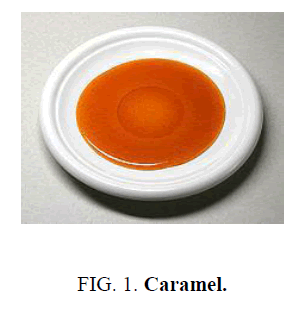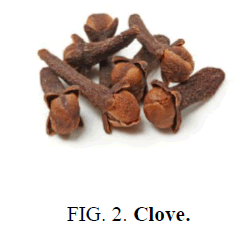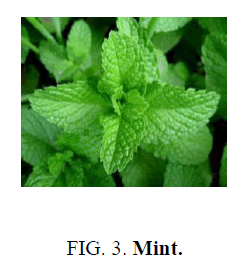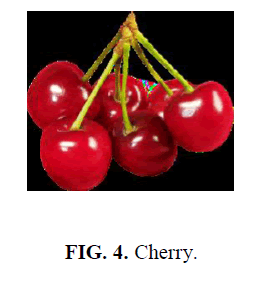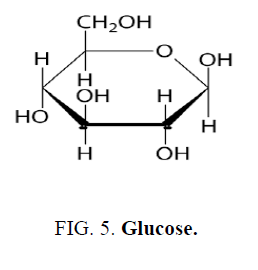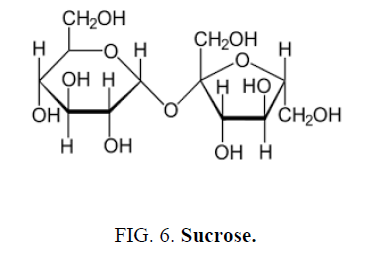Review
, Volume: 10( 5)An Overview of Organoleptic Additives
- *Correspondence:
- Gautami J, Department of Pharmaceutics, SRM College of Pharmacy, Potheri, Kattankulathur, Tamil Nadu 603203, India, Tel: +91-9014605777; E-mail: gautami_j@gmail.com
Received: September 15, 2016; Accepted: September 17, 2016; Published: September 20, 2016
Citation: Gautami J. An Overview of Organoleptic Additives. Nano Sci Nano Technol. 2016;10(5):103.
Abstract
History records that medicaments have been notorious for bad sensual characteristics throughout although consciousness, to make them more palatable and acceptable to the senses prevailed. The early efforts at concealing the obnoxious and bitter tastes consisted chiefly of mixing the drugs with certain pleasant tasting and good flavored food like honey etc. Beyond that the patients lot was left to himself. If the medicine was bitter and it had to be taken there was no alternative to it. But in the modern age the acceptability of a dosage form by the senses or its organoleptic properties are considered to be very important qualities of the product and formulator cannot afford to lose sight of this fact.
Keywords
Colors; Taste; Odor; Flavored; Organoleptic; Dosage forms; Synthetic colors; Sweetening agents
Introduction
Important organoleptic characteristics which are manipulated to make dosage forms more pleasant are 1) Color, 2) Taste and 3) Odor.
Colors
Chief sources of color were the three natural kingdoms namely mineral, plant and animal kingdoms. The mineral colors were composed of materials such as ferric oxides red and yellow, lead chromate, Prussian blue. Some mineral colors found use in cosmetics and coloration of lotions. Plant were most important source of colors in ancient times. Notable colors of plant world were alizarin, anthocyanin, carotenoids, chlorophyll, flavones. Beta-carotene extracted from carrots is yellow and has been used for coloring margarine. Flavones like riboflavin are yellow and when present in formulation impart their color. Saffron which is highly priced material and along with color possess coloring and flavoring food delicacies [1-10].
The animal world has been comparatively a minor source of colors. Tyrian blue was obtained by oxidizing a colorless secretion from the glands of snails. Cochineal, an insect containing a bright red color, carmine acid [11-15]. Synthetic colors were discovered by with the accidental breaking of a thermometer in 1956 while attempting synthesize quinine. He obtained dyes by oxidation of aniline containing ortho and para toluidines as impurities. The early synthetic colors were evolved from aniline [16-25].
• Natural colors: Annato, carotene, chlorophyll, titanium dioxide, cochineal, red and yellow oxides of iron.
• Artificial colors: Caramel (Figure 1).
• Coal tar colors: Naphthol blue black, brilliant blue, resorcin brown, sunset yellow, tartrazine.
• Lakes: Aluminum or calcium salts of any of the water soluble colors.
Flavoring agents
Flavor includes initial impact, mouth feel and after effects of the preparation. The flavors for pharmaceutical products consisted of volatile oils like anise, clove, fennel, lemon, orange, winter green oils or of their separated fractions such as menthol, thymol, camphor etc. (Figure 2). Flavors are also marketed as spray dried powders or adsorbed powders. The spray dried flavors are produced by emulsification of naturally occurring volatile oils using acacia dextrin [26-35]. Mint, chocolate, vanilla and custard will produce alkaline taste. Lemon, orange, anise, liquorice, raspberry, cherry, strawberry acid taste (Figure 3). Anise, mint, Fennel, chocolate, cherry bitter taste. Grape, lemon, burgundy metallic taste. Citrus, raspberry, fruity, melon salty taste. Fruity, vanilla, honey sweet taste [36-43]. Cherry, raspberry, strawberry, apple, rose color ranges from pink to red (Figure 4). Chocolate, honey, walnut, caramel brown. Lemon, lime, orange, custard, cherry yellow to orange. Banana, mint green. Vanilla, mint, spearmint, jasmine, banana white to off white. Violet, Grape, liquorice, violet to purple. Blueberry, mixed fruit, plum blue color [44-50].
Storage of flavors
The flavors in the modern forms may have to be stored for some time before being used. It is essential that during this period there is no qualitative change in them. The flavors obtained from a flavor company should be stored at low temperature 15°C to 30°C and in a place where relative humidity range is below 45%.
Normally the flavors should be stocked in polythene bags enclosed in heavy plastic bags. Flavors not used within 12 months should be rejected. Each flavor should be properly codified and given an identification number [51-65].
Sweetening agents
Taste is again a chemical sense and its appreciation results from the contact between the taste possessing materials and the 9000 taste buds in the oral cavity. Four primary tastes sweet, bitter, sour, saline are recognized and all the other tastes are considered to be admixtures of one or more fundamental tastes in varying degrees [66-70].
Tastes are also sometimes considered to be mixed perceptions involving flavors and sounds etc. Adjustment of taste is considered essential for oral preparations. A survey of the taste preferences of human race, as a whole, indicates that sweet taste is very agreeable to our spices and almost every human being accepts this taste without reservations. Hence, for controlling the taste qualities efforts are directed towards making the preparations sweet to different degrees [71-78].
Sugars such as cane sugar, glucose with or without complimentary compounds like sorbitol, glycerin etc. have been used as sweetening agents from the very beginning (Figure 5). Sugar coating o pills was an ancient technique and simple syrup has been used as vehicle for many oral preparations. Sugar often comprise of appreciable portions of solid dosage forms such as tablets. Cane sugar is stable between pH 4-8 and is generally used along with glycerin or sorbitol which reduces its tendency to get crystallized. Liquid glucose, prepared by partial hydrolysis of starch is also very suitable for sweetening of liquid preparations. Although the chemical composition of glucose is not precise like the molasses or the honey yet it has posed no problems (Figure 6).However chief drawback with all sugars is their liability to microbial growths. Further, sugars such as lactose and maltose, have very limited sweetening power and as such the same are required to be used in large amounts [79-90].
Saccharin and cyclamates have had an era of popularity chiefly because very small amounts of these substances can make formulations appreciably sweet. Saccharin is marketed as saccharin sodium in which the hydrogen in –NH group is replaced by Na and which in the crystalline form also has two molecules of water o crystallization. Sodium saccharine can be easily prepared by dissolving saccharin in equimolecular quantities of aqueous sodium hydroxide solution followed by crystallization. Sodium saccharin is nearly 200 times more soluble in water in comparison to saccharin. Saccharin is reputed to be nearly 450 times sweeter [91-100].
Conclusion
The patient’s medication adherence is most important in therapy to get the optimum outcome. The medication adherence often closely associated with the odor, taste and color of the product. the proper combination of the flavor, fragrance and color in a dosage form contribute to the acceptance of the pharmaceutical products. The flavoring, sweetening and coloring agents grouped together as organoleptic excipients. The flavoring agents are included to improve the taste of the product either by providing an additional pleasant taste or by masking the unpleasant taste. In addition, there are several artificial sweeteners. They are sweeter than the sucrose and are suitable for patients who need to restrict their sugar intake. The coloring agents are included in the dosage forms not only to improve the attractiveness of the product, but also to enable easy product identification, particularly in poisonous materials.
References
- Purba MK, Agrawal N, Shukla SK. Detection of Non-Permitted Food Colors in Edibles. J Forensic Res.2015;S4:003.
- Kabeya M, Ina K, Yuasa S, et al. Effects of Oral Rinse using Lemon-Flavored Water with or without Rebamipide on Fluoropyrimidine-Induced Stomatitis. J Integr Oncol. 2013;2:107.
- Gowder SJT. Safety Assessment of Food Flavor - Cinnamaldehyde. Biosafety. 2014;3:e147.
- Ruan ED, Aalhus J, Juarez M. Sensitive Analysis of Off-flavor Compounds, Geosmin and 2-Methylisoborneol, in Water and Farmed Sturgeon by using Stir Bar Sorptive Extraction Coupled with Thermal Desorption and Gas Chromatography-Mass Spectrometry. J Chromatograph Separat Techniq. 2014;5:228.
- Green BW, Schrader KK. Effect of Stocking Large Channel Catfish in a Biofloc Technology Production System on Production and Incidence of Common Microbial Off-Flavor Compounds. J Aquac Res Development. 2015;6:314.
- Zimba PV, Grimm CC. Statistical Approaches to Optimize Detection of MIB Off-Flavor in Aquaculture Raised Channel Catfish. J Aquac Res Development. 2015;6:319.
- Mnaa S, Shaker E, Azzam AM. Effects of Heavy Metals and Monosodium L-Glutamate in Food Flavors on Albino Rats. J Biomol Res Ther. 2015;4:127.
- Lin X, Peter P. Cool Water Off-flavor Algae and Water Quality in Four Arkansas Commercial Catfish Farms. J Fisheries Livest Prod. 2016;4:158.
- Huang Q, Lei C, Hong S, et al. Effect of Different Drying Method on Volatile Flavor Compounds of Lactarius deliciosus. J Food Process Technol. 2016;7:615.
- Beamish R, Gordon E, Wade J, et al. The Winter Infection of Sea Lice on Salmon in Farms in a Coastal Inlet in British Columbia and Possible Causes. J Aquac Res Development. 2011;2:107.
- Vidhya M, Bhanu RV. Effect of Knitted Bamboo Structures Dyed with Natural Colorants on Ultraviolet Radiation Protection. J Textile Sci Eng. 2012;2:115.
- Chen P, Taniguchi A. Detection of DNA Damage Response Caused by Different Forms of Titanium Dioxide Nanoparticles using Sensor Cells. J Biosens Bioelectron. 2012;3:129.
- Begum S, Ansari MNM, Keong LM, et al. Physical Characterization and Microstructure Evaluation of Titanium Dioxide Semiconductor Discs Processed with Binders. J Mate Sci Eng. 2013;2:126.
- El-Said KS, Ali EM, Kanehira K, Taniguchi A. Effects of Toll-like Receptors 3 and 4 Induced by Titanium Dioxide Nanoparticles in DNA Damage- Detecting Sensor Cells. J Biosens Bioelectron. 2013;4:144.
- Browning CL, Mason MD, Wise JP, et al. Titanium Dioxide Nanoparticles are not Cytotoxic or Clastogenic in Human Skin Cells. J Environ Anal Toxicol. 2014;4:239.
- Hussein FH, Shaheed MA. Preparation and Applications of Titanium Dioxide and Zinc Oxide Nanoparticles. J Environ Anal Chem. 2015;2:e109.
- Sujata SA, Jack NA. Titanium Dioxide Nanoparticles as an Environmental Sanitizing Agent. J Microb Biochem Technol. 2015;7:61-4.
- Daula UA, Schramm K. Nanoparticulat Printex 90 and Titanium Dioxide Stimulate Catecholamine Production in Ciliated Protozoan, Tetrahymena thermophila. Biochem Anal Biochem. 2015;4:212.
- Bakare AA, Udoakang AJ, Anifowoshe AT,et al.Genotoxicity of Titanium Dioxide Nanoparticles using the Mouse Bone Marrow Micronucleus and Sperm Morphology Assays. J Pollut Eff Cont. 2016;4:156.
- Kim YK, Quadro L. Who Needs β-Carotene? A focus on Embryonic Development. J Nutr Food Sci. 2012;2:e113.
- González VT, Araya GJM, Feijoo SL, et al. Cloning and Functional Expression of Ζ-Carotene Desaturase, A Novel Carotenoid Biosynthesis Gene from Ficus carica. J Biopro Biotech. 2012;2:125.
- Garande VK, Patil RS. Orange Fruited Tomato Cultivars: Rich Source of Beta Carotene. J Horticulture. 2014;1:108.
- Olmos J, Gómez R, Rubio VP. Apoptosis Comparison Effects Between Synthetic and Natural Β-Carotene from Dunaliella salinaon MDA-MB-231 Brest Cancer Cells. J Microb Biochem Technol. 2015;7:51-6.
- Kele?temur GT, Çoban OE. Effects of The β-Carotene on the Growth Performance and Skin Pigmentation of Rainbow Trout (Oncorhynchus mykiss, W. 1792). J Fisheries Livest Prod. 2016;4:164.
- Eriksen NT. Research Trends in the Dominating Microalgal Pigments, β-carotene, Astaxanthin, and Phycocyanin Used in Feed, in Foods, and in Health Applications. J Nutr Food Sci. 2016;6:507.
- Qureshi AA et al. Pharmacokinetics and Bioavailability of Annatto δ-tocotrienol in Healthy Fed Subjects. J Clin Exp Cardiolog. 2015;6:411.
- Bazin I, Hassine AIH, Mnif W, et al. YES as a Tool for Detecting Estrogenic Activity of Some Food Additives Compounds: E 104, E 122, E 124, E 132 and E 171. J Ecosys Ecograph. 2013;3:128.
- Pisoschi AM. Determination of Several Food Additives and Ingredients by Electrochemical Techniques. Biochem Anal Biochem. 2013;2:e140.
- Paritova A, Sarsembayeva N, Lozowicka B, et al. The Influence of Chankanay Zeolites as Feed Additives on the Chemical, Biochemical and Histological Profile of the Rainbow Trout (Oncorhynchus mykiss). J Aquac Res Development. 2013;5:205.
- Kusworo TD, Budiyono, Supriyadi J, et al. Enhanced Separation Performance of Cellulose Acetate Membrane for Brackish Water Separation Using Modification of Additives and Thermal Annealing. Int J Waste Resources. 2014;4:131.
- Eric B, Joel F, Grace O. Oil Well Cement Additives: A Review of the Common Types. Oil Gas Res. 2016;2:112.
- Abdulrazzak FH, Hussein FH. Effects of Nanoparticle Size on Catalytic and Photocatalytic Activity of Carbon Nanotubes-Titanium Dioxide Composites. J Environ Anal Chem. 2015;2:e110.
- Dada AA. Improvement of Tilapia (Oreochromis niloticus Linnaeus, 1758) Growth Performance Fed Three Commercial Feed Additives in Diets. J Aquac Res Development. 2015;6:325.
- Mohamed SM, Magdy IH, Olfat AM, et al. Role of Oligosaccharides as Biological Additives in Cultured Oreochromis niloticus. J Aquac Res Development. 2013;5:207.
- Gaur K. Study of Reduced Formation Damage due to Oil Well Drilling Mud by Barite and Gas Oil Additives. J Biodivers Endanger Species. 2015;3:147.
- Minozzi S, Federica B, Walter P, et al. A Case of Gout from Imperial Rome (1st-2nd Century AD). J Clin Res Bioeth. 2013;4:162.
- Minozzi S, Lunardini A, Catalano P, et al. Dwarfism in Imperial Rome: A Case of Skeletal Evidence. J Clin Res Bioeth. 2013;4:154.
- Gu T. Theoretical Modeling of the Possibility of Acid Producing Bacteria Causing Fast Pitting Bioc`orrosion. J Microb Biochem Technol. 2014;6:67-73.
- Kandi V. Bacterial Colony Characters: Pitting Colonies. J Med Microb Diagn. 2015;4:102.
- Adel AAEE. Potential of Some Volatile Oils and Chemicals against Lesser Wax Moth, Acheroia gresilla F. (Lepidoptera: Pyralidae). Entomol Ornithol Herpetol. 2014;3:129.
- Abdolazizi S, Ghaderi E, Naghdi N, et al.Effects of Clove Oil as an Anesthetic on Some Hematological Parameters of carassius auratus. J Aquac Res Development. 2011;2:108.
- Mani F, Braga CP, Barbosa NEL, et al. Influence of Clove Tea (Syzygium Aromaticum) on Body Weight and Biochemical Parameters of Rats Subjected to Ethanol Consumption and Abstinence. Med Chem. 2012;2:81-5.
- Hussein HZ. Activity of Pomegranate Peels and Clove Powders in Detoxification of Aflatoxin B1 and Ochratoxin A from Contaminated Poultry Diet. J Plant Pathol Microb. 2015;6:249.
- Priya ES, Selvan PS, Yavanarajan A. Chemotypic Variation in Clove Oil and Lemongrass Oil Obtained from Three Different Geographical Locations of India. J Pharmacogn Nat Prod. 2015;1:102.
- Akhzari M, Mirghiasi SM, Vassaf M, et al. The Effect of Citrullus Colocynthis on the Reduction of Inflammatory Agents in Osteoarthritis. Mol Biol. 2015;4:147.
- Asimi OA, Sahu NP. Effect of Antioxidant Rich Spices, Clove and Cardamom Extracts on the Metabolic Enzyme Activity of Labeo rohita. J Fisheries Livest Prod. 2016;4:157.
- Shende PK, Gaud RS, Bakal R, et al. Clove Oil Emulsified Buccal Patch of Serratiopeptidase for Controlled Release in Toothache. J Bioequiv Availab. 2016;8:134-9.
- Vasileva V, Ilieva A. Changes in Some Parameters in Mixtures of Sainfoin with Subterranean Clover. Int J Waste Resour. 2016;6:226.
- Holland NA. Cardiac Ischemia Reperfusion Injury Following Instillation of 20 nm Citrate-capped Nanosilver. J Nanomed Nanotechnol.2016;S6:006.
- Vidanapathirana AK, Thompson L, Odom J, et al. Vascular Tissue Contractility Changes Following Late Gestational Exposure to Multi-Walled Carbon Nanotubes or their Dispersing Vehicle in Sprague Dawley Rats. J Nanomed Nanotechnol. 2014;5:201.
- Jeannine D. The impact of perceptual interactions on perceived flavor. Food QualPref. 2003;14(2):137-46.
- Dhrubo JS. Esters, terpenes and flavours: make the mood cheers by three musketeers. World JPharmaRes. 2015;4(8):01-40.
- Ma J, Bellon M, Wishart JM, et al. Effect of the artificial sweetener, sucralose, on gastric emptying and incretin hormone release in healthy subjects. Am J Physiol Gastrointest Liver Physiol. 2009;296(4):G735-9.
- Eric D. Sweeteners: discovery, molecular design, and chemoreception. Food/Nahrung. 1991;35(10):1046.
- Jacela JY, Joel MD, Michael DT, et al. Feed additives for swine: Fact sheets–flavors and mold inhibitors, mycotoxin binders, and antioxidant. J Swine Health Prod. 2010;18:27-32.
- Lyly M, Kirsi HL, Marjatta SM, et al. Fibre in beverages can enhance perceived satiety. Eur J Clin Nutr. 2009;48(4):251-8.
- Campbell A. The feed intake of weaner pigs. Anim Prod. 1976;23:417-9.
- King RH. The effect of adding a feed flavour to the diets of young pigs before and after weaning. Austral J AgriAnim Husban. 1979;19:695-7.
- Schöne F. Effects of essential oils from fennel (Foeniculi aetheroleum) and caraway (Carvi aetheroleum) in pigs. J Anim Physiol Anim Nutr. 2006;90:500-10.
- Langendijk P, Bolhuis JE, Laurenssen BFA. Effects of pre- and postnatal exposure to garlic and aniseed flavour on pre- and postweaning feed intake in pigs. Livestock Sci. 2007;108:284-7.
- Clouard C, Melanie J, Marie CMS, et al. Exposures to conditioned flavours with different hedonic values induce contrasted behavioural and brain responses in pigs. PloS One. 2012;7(5):e37968.
- Clouard C, Meunier SMC, Val LD. The effects of sensory functional ingredients on food preferences, intake and weight gain in juvenile pigs. Appl Anim Behav Sci. 2012;138(2):36-46.
- Clouard C, Val LD. Impact of sensory feed additives on feed intake, feed preferences, and growth of female piglets during the early postweaning period. J Anim Sci. 2014;92(5):2133-40.
- Clouard C, Meunier SMC, Val LD. Food preferences and aversions in human health and nutrition: how can pigs help the biomedical research? AnimalInter Anim Biosci. 2012;6(1):118-36.
- Chambers ES, Bridge MW, Jones DA. Carbohydrate sensing in the human mouth: effects on exercise performance and brain activity. J Physiol. 2009;587(8):1779-94.
- Kennedy JM, Baldwin BA. Taste preferences in pigs for nutritive and non-nutritive sweet solutions. Anim Behav. 1972;20(4):706-18.
- Brooks SJ, Cedernaes J, Schioth HB. Increased prefrontal and parahippocampal activation with reduced dorsolateral prefrontal and insular cortex activation to food images in obesity: a meta-analysis of fMRI studies. PloS One. 2013;8(4):e60393.
- Clouard C. Combined compared to dissociated oral and intestinal sucrose stimuli induce different brain hedonic processes. Front Psychol. 2014;5:861.
- Yamamoto T. Neural substrates for the processing of cognitive and affective aspects of taste in the brain. Arch Histol Cytol. 2006;69(4):243-55.
- Rolls ET. Brain mechanisms underlying flavor and appetite. Philos Trans R Soc Lond B Biol Sci.2006;361(1471):1123-36.
- Frank GK, Oberndorfer TA, Simmons AN, et al. Sucrose activates human taste pathways differently from artificial sweetener. NeuroImage. 2008;39(4):1559-69.
- Stice E, Burger KS, Yokum S. Relative ability of fat and sugar tastes to activate reward, gustatory, and somatosensory regions. Am J Clin Nutr. 2013;98(6):1377-84.
- Small DM, Jones GM, Dagher A. Feeding-induced dopamine release in dorsal striatum correlates with meal pleasantness ratings in healthy human volunteers. NeuroImage. 2003;19(4):1709-15.
- Henkin RI, Levy LM. Lateralization of brain activation to imagination and smell of odors using functional magnetic resonance imaging (fMRI): left hemispheric localization of pleasant and right hemispheric localization of unpleasant odors. J Comput Assist Tomogr. 2001; 25(4):493-514.
- Goes TC, Antunes FD, Alves PB, et al. Effect of sweet orange aroma on experimental anxiety in humans. J Altern Complement Med. 2012;18(8):798-804.
- Jafarzadeh M, Arman S, Pour FF. Effect of aromatherapy with orange essential oil on salivary cortisol and pulse rate in children during dental treatment: A randomized controlled clinical trial. Adv Biomed Res. 2013;2:10.
- Lehrner J. Ambient odor of orange in a dental office reduces anxiety and improves mood in female patients. Physiol Behav. 2000;71(2):83-6.
- Komori T, Fujiwara R, Tanida M, et al. Effects of citrus fragrance on immune function and depressive states. Neuroimmunomodulation. 1995;2(3):174-80.
- Shen J, Niijima A, Tanida M,et al. Olfactory stimulation with scent of grapefruit oil affects autonomic nerves, lipolysis and appetite in rats. Neurosci Lett. 2005;380(3):289-94.
- Astell KJ, Mathai ML, Su XQ. A review on botanical species and chemical compounds with appetite suppressing properties for body weight control. Plant Foods Hum Nutr. 2013;68(3):213-21.
- Stohs SJ. Problems with Citrus aurantium information in "A review on botanical species and chemical compounds with appetite suppressing properties for body weight control". Plant Foods Hum Nutr.2013;68(3):329-331.
- Cautela D, Laratta B, Santelli F, et al. Estimating bergamot juice adulteration of lemon juice by high-performance liquid chromatography (HPLC) analysis of flavanone glycosides. J Agric Food Chem. 2008;56(13):5407-14.
- Gattuso G, Barreca D, Gargiulli C, et al. Flavonoid composition of Citrus juices. Molecules. 2007;12(8):1641-73.
- Agarwal K, Mukherjee A, Chkrabarti J. In vivo cytogeneticstudies on mice exposed to natural food colourings. Food Chem Toxicol. 1994;32:837-8.
- Appendini P, Hotchkiss JH. Review of antimicrobial food packaging. Inno Food Sci Emer Tech, 2012;3:113-26.
- Barbosa PL, Jose MCF, Raquel S, et al. Development of antioxidante active films containing tocopherols to extend the shelf life of fish. Food Control. 2013;31(1):236-43.
- Bauer AK, Dwyer NLD, Hankin JA, et al.The lung tumor promoter, butylated hydroxytoluene (BHT), causes chronic inflammation in promotion-sensitive BALB/cByJ mice but not in promotion resistant CXB4 mice. Toxicology. 2011;169(1):1-15.
- Bayarri M.Properties of lysozyme/low methoxyl (LM) pectin complexes for antimicrobial edible Food packaging. J Food Eng. 2014;131:18-25.
- Binstok G, Carmen C, Varela O, et al. Sorbate-nitrite reactions in meat products. Food Res Int. 1998;31:581-5.
- Brusick DJ. A critical review of the genetic toxicity of steviol and steviol glycosides. Food Chem Toxicol. 2008;46(7):S83-91.
- Burt S. Essential oils: their antibacterial properties and potential applications in foods –A review. Int J Food Microbiol. 2004;94(3):223-53.
- Carocho M, Ferreira ICFR. A review on antioxidants, prooxidants and related controversy: Natural and synthetic compounds, screening and analysis methodologies and future perspectives. Food Chem Toxicol. 2013;51:15-25.
- Carocho M, Barreiro MF, Morales P, et al.Adding molecules to Food, pros and cons: A review of synthetic and natural food additives. Compr Rev Food Sci Food Saf. 2014;13(4):377-99.
- Carr AC, Zhu B, Frei B.Potential antiatherogenic mechanisms of ascorbate (Vitamin C) and α-tocopherol (Vitamin E). Circ Res. 2000;87:349-54.
- Cisse M, Polidori M, Loiseau D, et al. Preservation of mango quality by using functional chitosan-lactoperoxidase systems coatings. Postharvest Biol Technol. 2015;101:10-4.
- Cleveland J, Montville TJ, Nes IF, et al. Bacteriocins: Safe, natural antimicrobials for food preservation. Int J Food Microbiol. 2001;71(1):001-20.
- Choudhary AK, Rathinasamy SD.Effect of long intake of aspartame on ionic imbalance in immune organs of immunized wistar albino rats. Biomed Agi Pathol. 2014;4:243-9.
- Delgado V, Jiménez AR, Paredes L. Natural pigments: Carotenoids, anthocyanins, and betalains –characteristics, biosynthesis, processing, and stability. Crit Rev Food Sci Nutr. 2000;40(3):173-289.
- Devcich DA, Pedersen IK, Petrie KJ. You eat what you are: Modern health worries and the acceptance of natural and synthetic additives in functional foods. Appetite. 2000;48(3):333-7.
- EFSA, Scientific Opinion. Scientific opinion on the use of natamycin (E235) as a food additive. ESFA J. 2009;7(12):1412.
